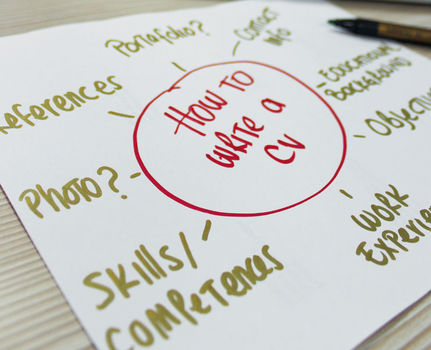Wondering how to write a resume in English?
A resume or CV (curriculum vitae) is your initial presentation to any job for which you are applying. In Colombia nowadays, it is not enough to have just a Spanish version of your resume. You need to start preparing an English version, too. However, a problem that many of us face is that we tend to translate straightforwardly from our native language to English. This is a common mistake whenever communicating in an additional language. In this article, we provide you with some tips to help you make a perfect resume – even in English.
Before starting, remember that there can be certain special or expected ways of presenting a resume in particular fields. For example, art professionals – such as artists, photographers, journalists, and publicists – frequently use creative templates to introduce themselves, (usually found in Canva or Picktochart) different than the portfolios of their work. This form can also work in other fields, depending on the position for which you are applying. However, no matter what, you must be professional.
Take note of this tips:
Contact information goes in the heading. Include your: full name, address with postal code (if applicable in your country), contact phone number, and email.
Do not include anything personal or security sensitive, such as your age, date of birth, marital status, or a national ID number. Also, most of CVs do not require a photo, unless your personal appearance is important for the position (for example: model, actor, TV host).
Include a career statement. This must be concise and clear. Think about the immediate position for which you are applying, not goal five years in a future. For example: Become an Executive Manager in a recording studio.
Provide your work experience that is relevant for the position. Start with your most recent job. It is important to include some bullet points with details about the company and what your responsibilities or accomplishments were.

5. It is better to use past tenses (except when describing your present job).
6 Summarize your education.
7. Include a section with information about your skills and qualifications, such as languages, computer programming knowledge, etc.
8. Be sure to separate each category in the resume: Objective, Work Experience, Education, Additional Skills, etc.
9. Do not forget your references.
10. Use dynamic verbs and descriptors, such as: experienced, accomplished, managed, produced, encouraged, etc.
11.Do not use the subject ‘I’.
Overall, remember that your resume is an advertisement for yourself. It must present your information in a way that is attention-getting but professional and easy to understand. A well crafted resume can be the first step towards new opportunities and careers.

